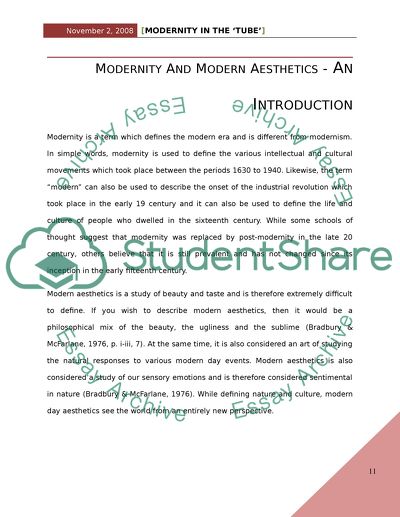Cite this document
(“Critically compare 'Modern Times' with Fritz Langs Metropolis and/or Essay”, n.d.)
Critically compare 'Modern Times' with Fritz Langs Metropolis and/or Essay. Retrieved from https://studentshare.org/miscellaneous/1549230-critically-compare-modern-times-with-fritz-langs-metropolis-andor-em-forsters-the-machine-stops-comparatively-asses-their-engagement-with-both-modernity-and-modernist-aesthetics
Critically compare 'Modern Times' with Fritz Langs Metropolis and/or Essay. Retrieved from https://studentshare.org/miscellaneous/1549230-critically-compare-modern-times-with-fritz-langs-metropolis-andor-em-forsters-the-machine-stops-comparatively-asses-their-engagement-with-both-modernity-and-modernist-aesthetics
(Critically Compare 'Modern Times' With Fritz Langs Metropolis and/Or Essay)
Critically Compare 'Modern Times' With Fritz Langs Metropolis and/Or Essay. https://studentshare.org/miscellaneous/1549230-critically-compare-modern-times-with-fritz-langs-metropolis-andor-em-forsters-the-machine-stops-comparatively-asses-their-engagement-with-both-modernity-and-modernist-aesthetics.
Critically Compare 'Modern Times' With Fritz Langs Metropolis and/Or Essay. https://studentshare.org/miscellaneous/1549230-critically-compare-modern-times-with-fritz-langs-metropolis-andor-em-forsters-the-machine-stops-comparatively-asses-their-engagement-with-both-modernity-and-modernist-aesthetics.
“Critically Compare 'Modern Times' With Fritz Langs Metropolis and/Or Essay”, n.d. https://studentshare.org/miscellaneous/1549230-critically-compare-modern-times-with-fritz-langs-metropolis-andor-em-forsters-the-machine-stops-comparatively-asses-their-engagement-with-both-modernity-and-modernist-aesthetics.


